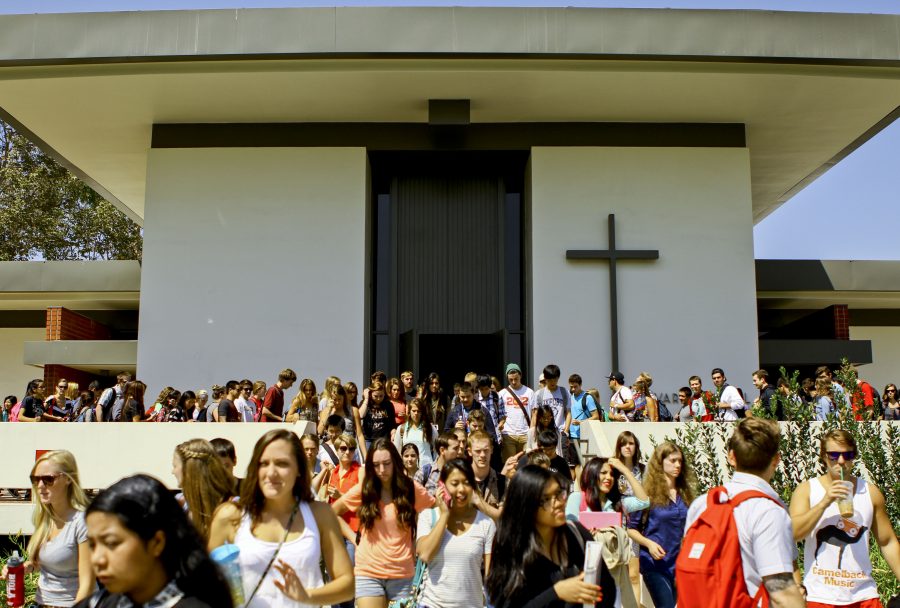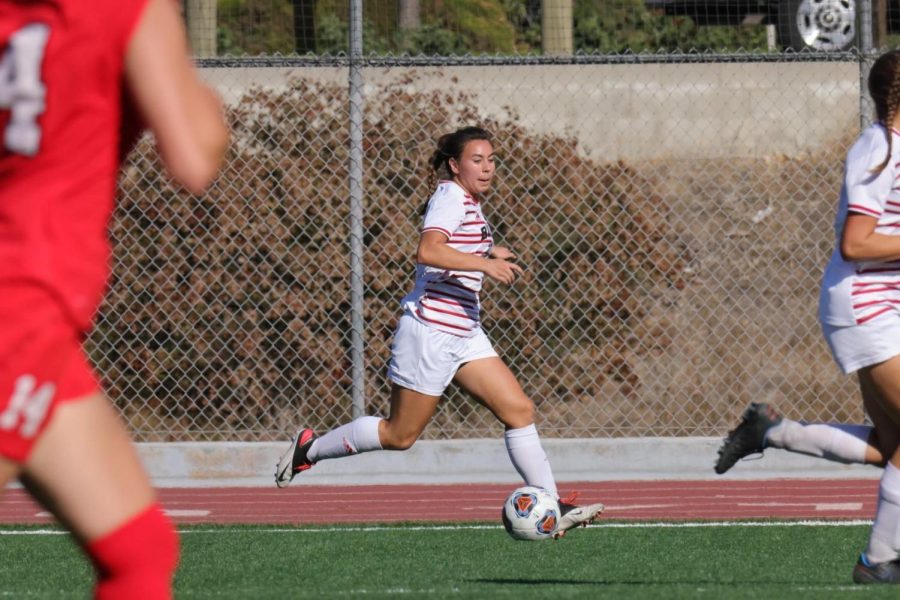It protrudes high into the sky, standing far above the campus, looking down on the busy students treading beneath. Its 300-ton strength lifts beams in perfect order onto the growing structure. The Biola crane – or Biola’s new mascot, as some have named it – proves a symbol of the vast amount of work going into the construction of the Alton and Lydia Lim Center for Science, Technology and Health building.
Beams and Blueprints
The staff in charge of the construction works in the sweltering heat from 6 a.m. until 3 p.m., putting up steel beams, laying the metal floor foundation and reorganizing the digital blueprints that portray the work in progress. Some work out on the site, while others do office work and the ordering of parts.
“The guys out in the field are some of the hardest workers you’ll ever meet,” said Scott Kaufman, assistant project manager from C.W. Driver.
Over Two Years of Planning
The new science building, which will officially open in the spring of 2018, has been the product of over two years of architectural planning. Facilities management has partnered with the construction company C.W. Driver and multiple independent construction workers to complete the enormous task of creating an elaborate science facility on campus.
The building process goes far beyond the hard hats, orange vests and dust that students see as they stroll by the construction site. It goes through phases of architectural designing and redesigning, digital blueprint drawing, equipment ordering, foundation laying and finally the physical structuring.
Safety Maintenance
C.W. Driver begins their projects with one basic but important element: safety. The leaders mainly concern themselves with the safety of their workers on the site. They even post more safety warning signs than the liability requires them to. On one of the walls in the portable office hangs a bulletin board with photos of the workers’ families to remind them the managers stress safety.
“It’s just really important to us that everyone gets to go home to their families,” Kaufman said.
C.W. Driver uses 3-D blueprints the workers can access through iPads to avoid running into any estimation errors when they get into the field.
“Construction is not what it used to be. Construction is always getting more sophisticated,” Kaufman said. “We want to make it in the model first so that it saves us money, saves us time.”
Each morning, the workers begin the day by attending a meeting with their section to go over the activities of the day and the plan for the week. The foremen review the safety issues involved in the tasks they will embark on that day and encourage the workers to put safety first at all times. Afterwards, the workers go out on the construction site and begin the difficult physical labor involved in building. Valle must stay on top of the schedule so that he can order all of the parts his men will need before the day they will need them.
“I pretty much have to stay two to three weeks ahead of time, at least,” Valle said. “I pretty much have to set my men up for success.”
Often Valle and the other foremen will have to make large orders of parts. Thus, they have to plan far in advance to ensure the parts will be in stock and in good condition.
“A lot of our job is looking ahead,” Kaufman said. “Time is money, and that is not a fake thing.”
Every aspect of the construction business remains time-sensitive. The people in charge pick an estimated date and desperately try to deliver on time. In the portable office on the construction site, calendars with various markings on them fill several walls.
“We are tracking every single day for our own contractors,” Kaufman said. “Dates are super critical in our industry, so you will see calendars everywhere.”
The workers typically take two breaks during the day — one 20-minute break at 9 a.m. and then a 30-minute break at noon. The men can always take water breaks but on particularly hot days, will usually receive extra breaks.
“It is really important they stay hydrated,” Kaufman said. “That’s our number one — hydration.”
Since the company works on a location where students live, the workers try to remain incognito so as not to interfere with the students’ everyday lives.
“Our goal is to kind of disappear, “Kaufman said. “Our goal is to be as little of an impact on [students] as possible.”
However, the company does enjoy opening up to students when students show interest. In the past, the company has given internships to students at the different universities they have done construction for. One of the students they gave an internship to in the past now works as an engineer for them.
“If [students] show interest, we are always here to show you what we do,” Kaufman said.







